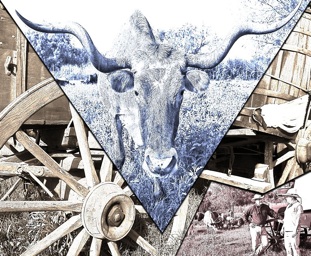
The Texas cattle-ranching tradition originated in the 1700’s; it developed out of the capturing of wild stock left behind by the 16th- and 17th-century Spanish explorers. In the beginning, cattle ranching was dominated by the Spanish missions. However the American Revolution in 1776 stimulated the ranching economy of the region when cattle were driven to Louisiana to feed the troops. This marked the decline of mission-based ranching and the emergence of private ranches. Ignacio de Perez, original owner of the LHI property, created a Spanish style rancho with vaquero’s that managed the native cattle know as “Longhorns.”
The Bexar-Bahia area is regarded as the cradle of Texas ranching where major techniques for stock handling, branding and cattl raising, along with cowboy accessories such as chaps, saddles, lariats, and other ranching equipment were developed. Trail drives moved the cattle to market; the cattle industry saw the emergence of important ranching families which resulted in cattle dynasties providing support and control of communities in the area.
The Presnall and Watson families ranched the property from 1882 to 1991; part of the history of the Chisholm and Great Western Trails starts with this farmstead. This land was one of the many gathering points for Longhorn cattle being driven across the Medina River at the Applewhite Crossing on the immediate west boundary of the Land Heritage Institute property marking the beginnings of the Great Western and Chisholm Trails. While railroads and refrigeration have changed some aspects of cattle marketing, much of the herding and stock handling traditions have continued to the present day.
Land Heritage Institute has re-established a herd of Longhorn Cattle on the site providing visitors an opportunity to view the cattle at close range. These purebred Longhorns are registered with the Cattlemen’s Texas Longhorn Registry (CTLR), an organization dedicated to the preservation of the authentic Longhorn bloodline.

Cattle Ranchers
